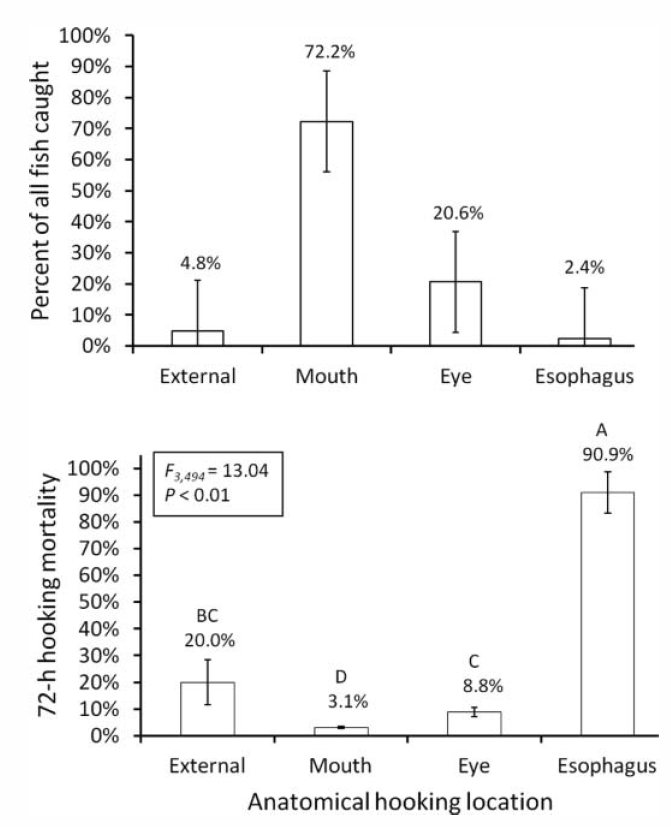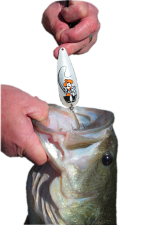Catch-and-Release Mortality of Blue Catfish Captured by Jug Fishing
(Funded by the Oklahoma Department of Wildlife Conservation through a Sportfish Restoration Grant)
Project personnel: Joseph Schmitt, Dan Shoup
Schmitt, J.D.*, and Shoup, D.E. 2013. Delayed hooking mortality of blue catfish caught on juglines. North American Journal of Fisheries Management. 33:245-252.

To prevent overharvest by anglers, bag limits and/or length regulation are often enforced on sport fisheries. Resent research by the Oklahoma Department of Wildlife Conservation (ODWC) determined that blue catfish Icalurus furcatus grow slowly and many fish are likely to be harvested before they can grow to trophy size. Therefore, to improve the abundance of large blue catfish in Oklahoma, the ODWC is changing bag limits for this species to restrict the harvest of these rare large fish. However, in order for bag limits to be effective, fish that are caught and released by anglers must have reasonably high survival.

While delayed hooking mortality has been well studied in some species such as largemouth bass, little is known about the delayed mortality of blue catfish. This is of particular concern because one of the most common angling methods for this species is jug fishing, a method that allows fish to be hooked for up to 24 hours before being released. Research on delayed mortality in other species suggests this added stress could lead to reduced survival of released blue catfish.

Blue Catfish (N = 559) were caught from three Oklahoma reservoirs with either 5/0 circle hooks or J-hooks fished for 24-h sets. One experimental fish (captured via jugline) and one control fish (captured via low-frequency electrofishing) were then placed in field enclosures (N = 25) and monitored for mortality after 72 h. Mean mortality was low at 8.50% (range, 0.00–37.50%; SE, 1.81%). Mortality decreased significantly with decreasing water temperatures (P > 0.01; odds ratio 1.1).Mortality was highest (mean = 25.31%) at water temperatures > 20◦C and decreased to 3.89% in water temperatures < 20◦C. We observed 0% mortality in water temperatures < 14◦C. Hook type did not significantly affect mortality, nor did the depth in the water column where the fish was hooked. For every 100-mm increase in total length, fish were six times less likely to die (odds ratio 0.17). Mean mortality for preferred-size fish was low at 2.50%, and no mortalities were observed for memorable or trophy-size fish. These results suggest that length regulations limiting the harvest of preferred-size or larger fish should be effective as a large proportion of released fish should survive to further contribute to the fishery.



